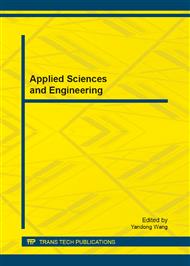p.351
p.356
p.362
p.367
p.372
p.376
p.381
p.386
p.391
Application of Finite Element Method to Crack Prediction in Laser Cladding Process
Abstract:
The cracks in clad layer are the most often defects in laser cladding of low ductility materials. This paper reports the efforts of crack prediction with finite element method. The process is modeled with commercial FEM software package ANSYS and the thermal-mechanical analysis is performed to inquire the strain-stress variation during cladding, especially the variation around the moment of solidification. The analysis result shows that, by the end of cladding, the clad layer is in tension stress and the stress values are varied in directions. The tension stress along the cladding direction is the maximum one, which causes the cracking in clayed layer. Increasing the preheating temperature of substrate is an effective way to avoid the crack generation.
Info:
Periodical:
Pages:
372-375
Citation:
Online since:
September 2012
Authors:
Keywords:
Price:
Сopyright:
© 2012 Trans Tech Publications Ltd. All Rights Reserved
Share:
Citation:


